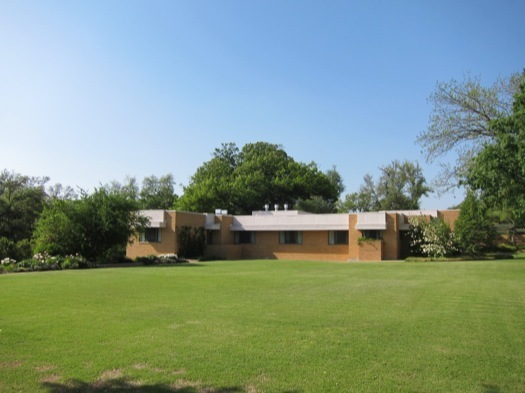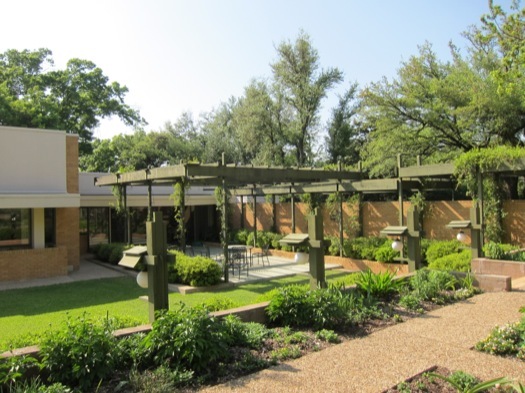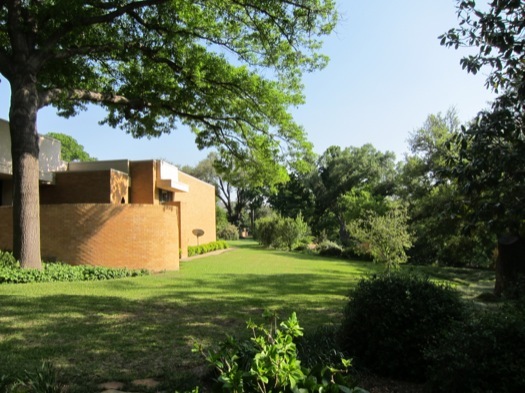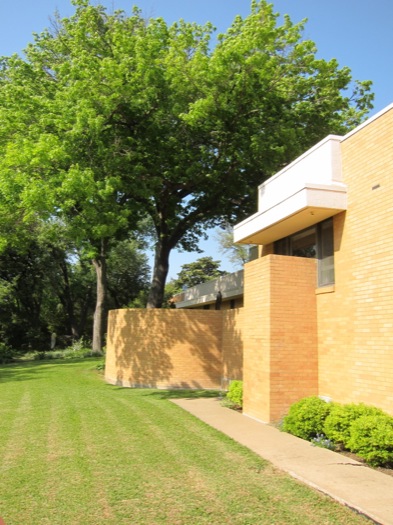
It's been a painful couple of weeks for modern preservationists. In Sunday's Times, Phil Patton reported on the sad disappearance of Frank Lloyd Wright's Hoffman Showroom, in New York. Sitting on a stretch of Park Avenue along with the Seagram Building, Lever House, and Pepsico, it was another modern landmark, with a sprialing turntable showing off dashing European luxury cars — Mercedes, Porsche, Jaguar — themselves the height of aspirational modern design.
The Showroom was demolished before anyone had a chance to raise a fuss about its loss, which is precisely what happened in Fort Worth last week, when a modern jewel of a home by architect Harwell Hamilton Harris with landscape by Thomas Church was destroyed, cynically, before preservationists could mount a serious defense. In Saturday's Dallas Morning News, I described this as an act of "brazen philistinism," and I believe it's a sadly accurate charge.
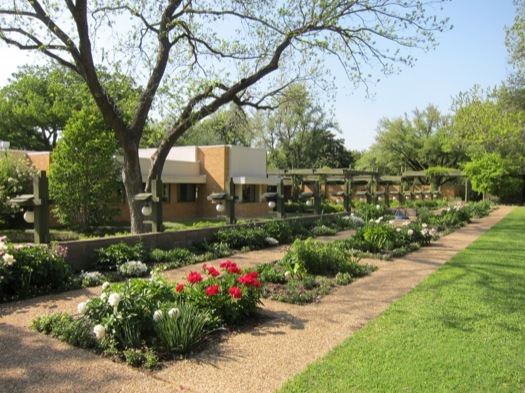
The house was built for Ruth Carter Stevenson, one of Fort Worth's most prominent arts patrons, who died in January at the age of 89. Just why she left the house unprotected is unclear, but is probably in some part a product of her native modesty, and certainly not a reflection on the house itself, which by all accounts she loved dearly. That modesty was evident in her choice of Harris — an architect largely influenced by Wright — to build a modern home rather than something more ostentatious. An excerpt from my story:
"At a time when everyone was still building chateaux and manor houses, Ruth Carter Stevenson embraced the modern movement and brought something original to the city of Fort Worth,” said Lisa Germany, an architectural historian and author of a monograph on Harris. “It broke the mold of what wealthy clients wanted. It was extremely original.”These two losses are disturbing in themselves, and also force us to ask how better can we protect our modern legacy in the face of a rapacious marketplace. For what it's worth, to follow (and above) are a few photographs of the Carter Stevenson House, courtesy of Rachel Leibowitz.
....A California native, Harris built homes with strong geometries, modest materials, and a sensitivity to the natural world around them. As a young architect, he had worked for the modernist Richard Neutra, and was later a part of the circle of young modernists in Los Angeles who gravitated to John Entenza, publisher of the landmark magazine Arts & Architecture. But his greatest influence was Frank Lloyd Wright, whose presence is notably evident in the Carter Stevenson House, which was modeled on Wright’s landmark Hollyhock House, in Los Angeles.A pinwheel of creamy brick, stucco, and redwood set along a ridge, the Carter Stevenson House somehow managed to be monumental and unpretentious. Inside, it was intimate and open, with low ceilings and corridors opening into atrium spaces that offered breath and natural light. The material palette was modest: peg board, cork, warm woods.
—@marklamster
